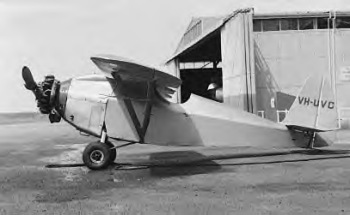The Comper Aircraft
Company was formed in 1929 by Flight Lieutenant Nicholas Comper, formerly
of the RAF, to build an aircraft of his own design. Designated Comper
CLA.7 and named 'Swift', the prototype, registration G-AARX, first flew at
Brooklands on 17 May 1930.
Seven more Swifts were completed during 1930, each powered by a Salmson
AD.9 radial engine. A test run with a prototype Pobjoy P radial engine led
to this being chosen as the standard power plant, and most of the earlier
models were subsequently refitted with the Pobjoy. A total of 41 of the
standard Swifts were built.

Three were then prepared specifically for racing, two with the 120 hp
Gipsy III engine and one with a 130 hp Gipsy Major.
Two of these aircraft were unveiled only a couple of weeks before the
King's Cup of 1932. The first was the Prince of Wales' aircraft, G-ABWW,
painted in the Guards colours of red and blue, with the 130 hp Gipsy Major
engine. The other was G-ABWH, with the 120 hp Gipsy III. Eight Swifts flew
in the race at Brooklands on July 7; G-AAZC, G-AAZD, G-AAZF, G-ABJR, G-ABTC,
G-ABUU, G-ABWH and G-ABWW. The race was won by W.L. Hope in a Fox Moth,
G-ABUT. Swift G-ABWW was second, flown by Edward Fielden.
In the 1980s, four Swifts remained on the British register, but only two
1932 aircraft were airworthy, G-ABUU and G-ACTF, the latter residing at
Brooklands Museum.
A few Pobjoy Swifts reached Australia, including Arthur Butler's
record-setting blue G-ABRE in November 1931. The sole surviving Gipsy
Swift, of the three built, has been described as the one once owned by a
Prince of Wales as his personal racing aircraft. That aircraft was powered
by a Gipsy Major engine, and had been flown in the Kings Cup Race in
England in 1932 (by the Prince's equerry, Flt. Lt. E.H. Fielden), as well
as the 1933 and 1934 Races, and the Cleveland Race, Ohio, in 1934.
Certainly, a very rare Gipsy Swift ended up an Australian resident, and
took part in the Ansett Brisbane to Adelaide Air Race of 1964. However,
this has been identified as G-ABWH, with the 120 hp engine. In the
mid-1960s the Gipsy Swift was owned by Air Vice Marshal Sir Edward Fielden.
It had then flown a little more than 230 hours since being built. It
claimed a top speed of 165 mph, 25 mph above the speed of the Pobjoy
Swift, and was a little heavier at 610 lbs. It was said then that "it
still flies like a dream".
This last Gipsy Swift appeared advertised for sale in 1998 by a Western
Australian owner. It still had the original Gipsy III engine and Fairey
Reed airscrew fitted and had by then accumulated 386 hours total time, but
none since a complete overhaul. It remained on the Australian aircraft
register in 2002.
